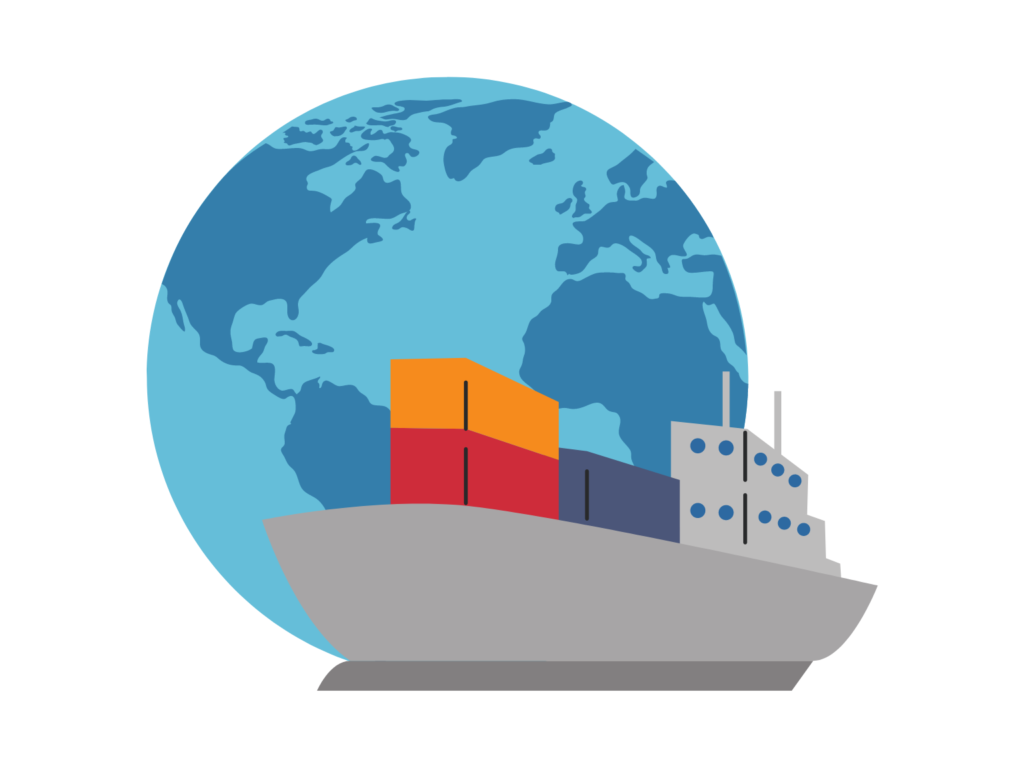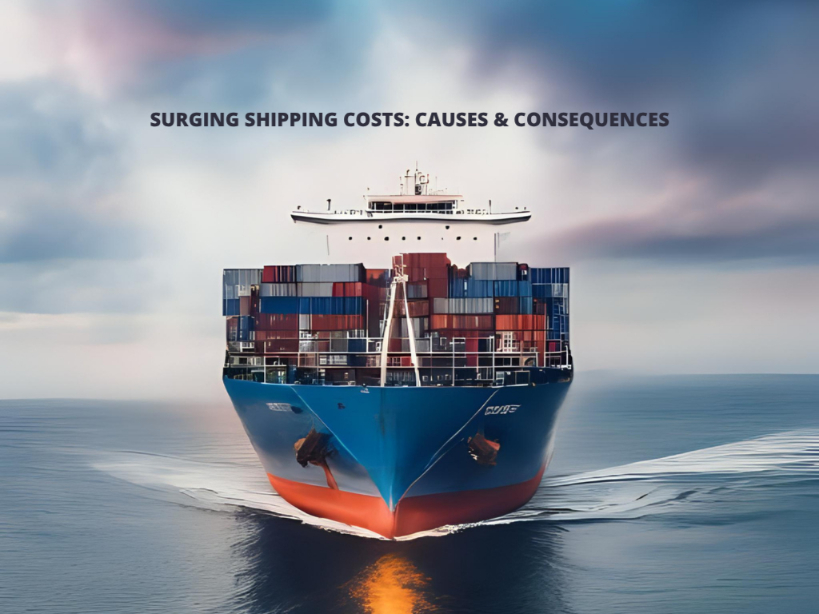Surging Shipping Costs: Causes & Consequences
In recent times, businesses worldwide have been grappling with the relentless surge in shipping costs, driven by a complex interplay of geopolitical tensions, escalating demand, and operational challenges. This presentation aims to dissect the primary factors fueling these rising costs and examine their profound implications for our industry.
Key Drivers of Increased Shipping Costs
- Detours Around Africa:
Amid persistent Houthi attacks in the Red Sea, ships are compelled to bypass the Suez Canal, opting instead for the longer route around Africa’s Cape of Good Hope. This routes translates into prolonged voyages and increased fuel expenditures, significantly elevating operational costs for shipping companies. - Port Congestion and Container Shortage:
Extended shipping routes exacerbate congestion at major ports globally. This congestion is compounded by a pronounced shortage of shipping containers, causing delays in cargo handling and amplifying logistical bottlenecks. The resultant port congestion not only hampers operational efficiency but also intensifies competition for limited container availability, thereby driving up shipping rates. - Tariffs on Chinese Electric Vehicles in South America:
Recent tariff impositions by Brazil and Mexico on Chinese electric vehicles have prompted a preemptive surge in shipments. Companies like BYD are front-loading their exports to beat impending tariffs, monopolizing vessel capacities and diminishing availability for other trade routes. This heightened competition for shipping resources naturally contributes to inflated freight costs. - US Election and Future Tariffs:
Anticipation surrounding potential tariff escalations on Chinese imports, speculated to range between 50% to 60%, has spurred a rush among importers to secure goods ahead of potential price hikes. This surge in demand has strained shipping capacities further, exerting additional upward pressure on shipping rates as carriers struggle to meet burgeoning cargo volumes. - Shipping Giants Raising Prices:
To offset mounting operational challenges and capitalize on heightened demand, major shipping lines have implemented sweeping General Rate Increases (GRIs) and additional surcharges. These collective measures are aimed at stabilizing operations amidst capacity constraints and rising operational costs. Consequently, businesses reliant on global shipping must now meticulously plan their logistics strategies to mitigate cost escalations and maintain competitive viability.
Trade Lane Impact
- China to India
- Reduced vessel capacities and multiple blank sailings have drastically reduced available space.
- Freight rates have surged from previous levels of USD 700-1000 per container to USD 4500-4700, reflecting the scarcity of shipping resources.
- Reduced vessel capacities and multiple blank sailings have drastically reduced available space.
- Other Asian Countries to India
- The region faces severe space crunches, with fully booked slots and escalating freight costs ranging from USD 2000-4000 per container. This situation underscores the widespread strain on shipping capacities across Asia.
- Europe & UK to India
- Despite stable freight costs, transit times have increased from 30 to 45+ days due to logistical challenges and increased demand. Businesses navigating this route must anticipate longer lead times to manage supply chain disruptions effectively.
- USA to India
- While impacts are relatively minor, freight levels have seen manageable increases of USD 300-500 per container. This route highlights the interconnectedness of global trade and the ripple effects of shipping cost escalations.

Feed Forward Recommendations:
Advance Planning: Given the volatility in shipping capacities and frequent delays, advance planning is critical. Businesses should establish robust logistics strategies that anticipate potential disruptions and secure vessel space well in advance to mitigate operational risks.
Optimum Stocks: Maintaining optimal inventory levels is essential to mitigate production stoppages caused by unpredictable shipping delays. Businesses should ensure adequate buffer stocks to offset potential disruptions in the supply chain, thereby safeguarding against unforeseen shipping interruptions.
In conclusion, the prevailing surge in shipping costs underscores the intricate web of factors shaping global logistics operations today. From geopolitical upheavals to regulatory shifts and operational exigencies, businesses must navigate a landscape fraught with volatility and cost escalation. By understanding these drivers and proactively strategizing around them, organizations can better position themselves to mitigate risks, optimize efficiencies, and sustain competitiveness in an increasingly complex global marketplace. Embracing agile supply chain management practices and leveraging predictive analytics will be crucial in navigating the evolving challenges of the shipping industry.
Coniferous: Keeping you informed about the current state of the industry


